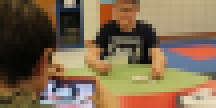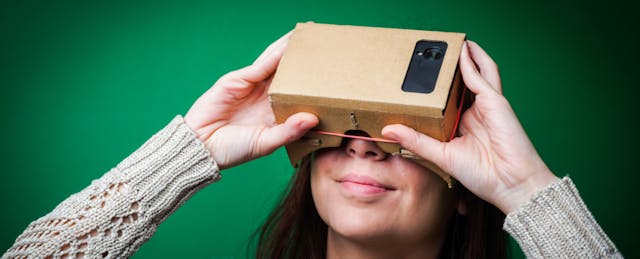My kids love it whenever they get the chance to use technology as part of the writing process. My job is to make sure that the tech use is meaningful and purposeful - when used correctly technology can help enhance and transform my lessons, provide real-world activities, and increase student engagement.
Jill Weber, Cheney Middle School
We all strive to develop students with the skills necessary to be successful after high school graduation. And national and local standards provide us with documents packed full of suggested benchmarks and commendable expectations.
The Common Core ELA writing standards encourage students to “use technology, including the Internet, to produce and publish writing and to interact and collaborate with others.” The National Council for the Social Studies urges us to find ways for our kids to “take informed action” based on what they have learned.
What teacher doesn’t want that for their students?
We all want our students to write more. To develop solutions to authentic problems. To spread their voices beyond the classroom. But it can be difficult for classroom teachers to have a clear vision of what that might look like in actual practice.
The good news is there is an abundance of multimedia resources available that support the creation and sharing of student storytelling products. This short list of tools and teaching suggestions can help educators integrate a variety of writing activities into their instructional designs. All are what I call Push / Pull tools, which teachers use to push content out to students and which students can also use to create content that teachers pull back in.
Connecting emotion and content
Jill Weber, a secondary school teacher in Cheney, Kansas, uses an effective ELA and social studies strategy called Note card confessions. Jill’s students start by analyzing letters and diary entries of early Kansas settler Mary Abell. Based on their research, students then write scripts using index cards and create videos that summarize the challenges of life on the prairie. Jill posts the completed videos on YouTube to reach a larger audience.
Note card confessions create a connection between emotion and content, increasing retention and student engagement. While Jill’s lesson focuses on social studies, teachers can adapt confessions to their own content areas.

Timelines as entry points
Kim Carrozza at Nashua High School South in New Hampshire is doing what many teachers are doing this fall—leading conversations about the past so that students can better understand the present. Speaking to New Hampshire Public Radio, Carrozza said:
I want to show the continuum of race relations in America, beginning with Reconstruction, coming through Jim Crow and the great migration in the 20s through the 40s, the Civil Rights events of the 50s and 60s, right up to the present day in Charlottesville. I want students to be able to trace the chain of events. What happened? How did we get from Reconstruction 150 years ago to Charlottesville?
I often hear from students 'Why do I have to learn about history? It's not important. It doesn't impact me.' Charlottesville is why we have to learn about it. You can't solve a problem if you don't understand its complexity . . .
One way to help students see this sort of cause and effect is to use a timeline. Sutori is a powerful yet easy to use push / pull tool that supports the integration of a variety of multimedia sources into a non-traditional timeline format. A teacher-created timeline shared with students can provide an entry point for discussing controversial issues. Working alone or in groups, students can then use the tool to mashup text, video, audio, and photographic evidence to create and share their solutions to those problems.
Sutori offers a variety of tutorials for creating your own timelines but also provides the ability to copy and edit shared timelines from other educators. Whether teacher or student created, each timeline is assigned its own URL that allows for easy access for collaboration and assessment.
Creating their own
A recent trend in education is the use of 3D virtual reality. Using Google Cardboard and 3D videos, Washington DC middle school teachers Paul Howard and Neil Solomon help their students understand the situation facing young Syrian refugees. Like Jill’s note card confessions, the visual impact of 3D images creates a strong connection between emotion and content in the minds of their students.
But while consuming 3D virtual reality content can be powerful for students, finding ways for them to create their own content can be even more meaningful. There are a variety of VR creation tools available but I like the ease of use in the Google Cardboard Camera app and the web-based tool Story Spheres. Both encourage the creation of either a panoramic photo or a 360-degree photo bubble.
But the real power of the two tools is that both support the addition of audio narration as part of the VR image. Cardboard Camera integrates a single audio clip. Story Spheres allows for multiple clips and background audio that creates a more realistic virtual environment; you can get a sense of the possibilities by viewing this scene of an 18th century French warship gundeck. As you rotate your view, the ambient background noises rotate with you. Clicking on the musical note icons will play different audio narratives.
This ability to embed audio supports the writing of researched and well-written scripts as part of the learning process. Audio-enhanced photos created using the Camera app can be shared via a variety of social media tools. Finished Story Spheres are published with a unique URL.
Teaching has always been difficult. Consistent and effective integration of writing can make it harder. Embedding college and career skills harder still. Using these multimedia tools can make your task easier by aligning to standards and supporting digital storytelling while encouraging student creativity.


